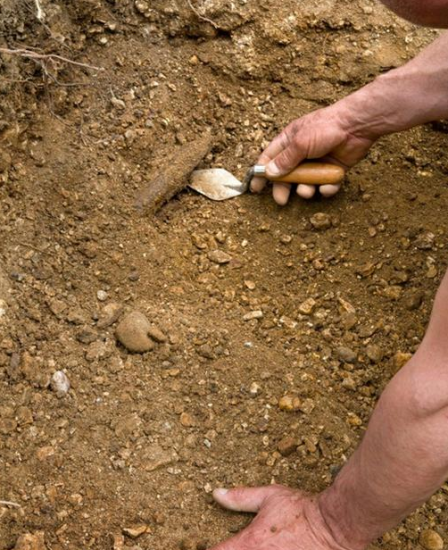PAP - Science and Scholarship in Poland
Source - http://www.naukawpolsce.pap.pl/en/news/news,402854,archaeologists-discovered-prehistoric-burial-mound-in-swietokrzyskie.html

Photo: Fotolia
Barrow, which is a remnant of the inhabitants of Sandomierz Land from more than 3 thousand years ago, has been discovered in Radoszki (Świętokrzyskie). It is yet another object of this type in the Opatówka river valley.
The most interesting fact about the discovery is that finding the mound did not require extensive research and excavations, as it concerned the object well-known to the local community. Small, two-meter elevation blended with the landscape of meadows so much villagers from Radoszki (commune Wilczyce) believed it to be a natural object.
Nothing could be further from the truth, say archaeologists. According to them, the elevation fits with the entire system of similar objects in the area near Sandomierz, in the valley of the river Opatówka.
Dr. Marek Florek from the Institute of Archaeology, Maria Curie-Skłodowska University in Lublin and Sandomierz delegation of the provincial monument protection office in Kielce told PAP that the barrow was discovered by students who conducted surface survey near the village Radoszki.
According to the archaeologist, based on the analysis of similar structure in the nearby Dacharzów, carefully studied in the 1990s, it is possible that the mound in Radoszki is a sepulchral mound that could arise in the second millennium BC, in the Bronze Age, the so-called Trzciniec culture.
"If we analyse the areas along Opatówka, we will find more similar +mounds+. They are arranged in such a way that are visible from each another. This may suggest that their location was planned. In addition to the burial mounds, they could perform the functions of the organization of space, a kind of markers on the ground" - explained Dr. Florek.
According to the archaeologist, this may be related to the gradual movement of the population along the river Opatówka. "It could be due to the type of economy, for example burning economy. After the burning of forests, shrubs, bushes, crops were grown. When the soil went barren after several years, the settlement would move on to take up new fields" - he explained. In his opinion, this type of settlement is well known from ethnographic research and studies of organization of ancient peoples.
According to scientists, the research shows that after many years people would often return to the places inhabited by their ancestors, organizing burials in the same places. Thorough research of similar mounds revealed that burial mounds could be used over up to 400 years, with decades-long intervals.
Excavations will show for how many years and how the barrow in Radoszki was used. According to Florek, the study of such places is interesting because many different forms of burial were used in the Trzciniec culture. "The dead were usually deposited into the burial pits. We also know, however, of occasional cremation graves" - he said. The bodies were laid on the side with a slightly curled legs and arms, "positioned as if asleep" - he explained.
The area near Sandomierz has bee regularly examined by archaeologists for over a hundred years. "The mere fact of the discovery of a previously unknown mound is proof that this land still hides many secrets" - emphasised Florek.